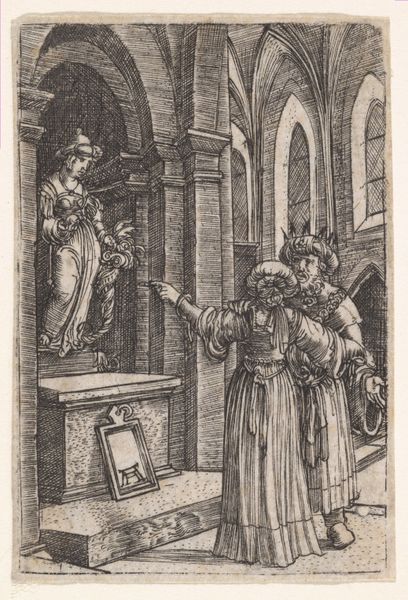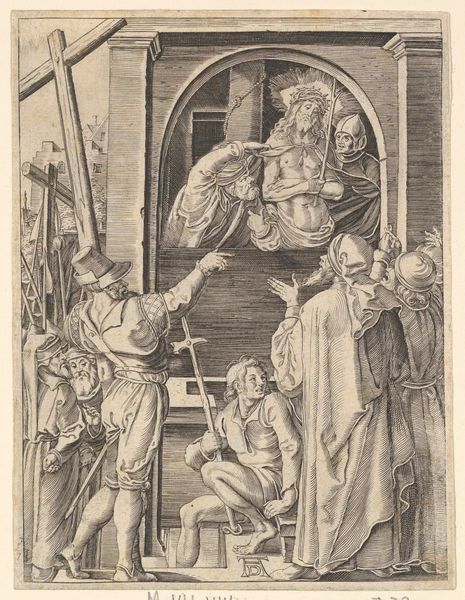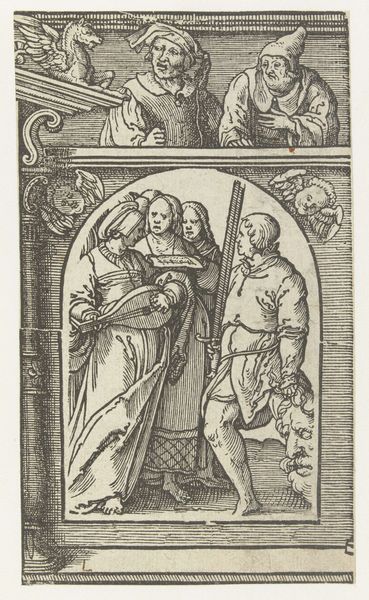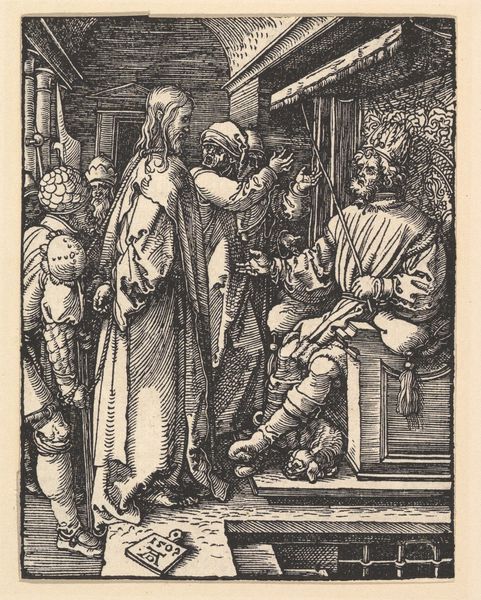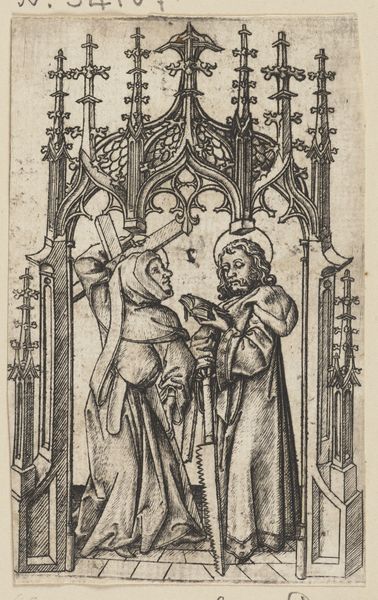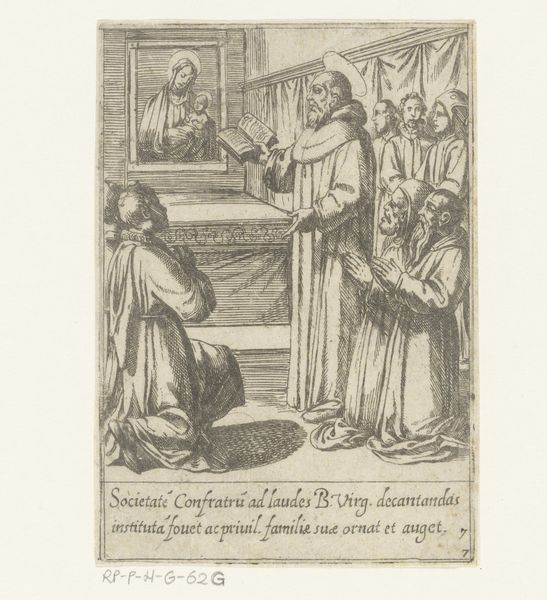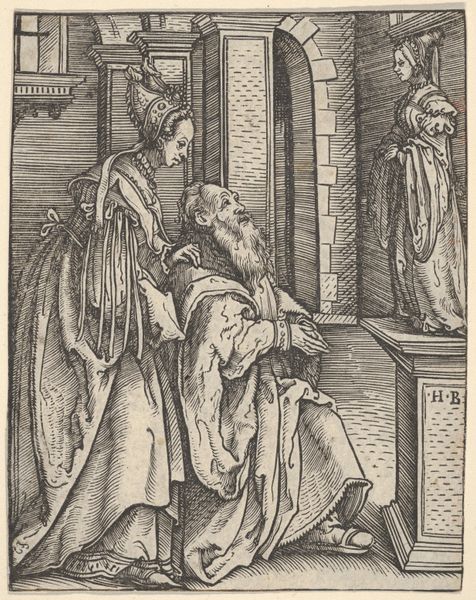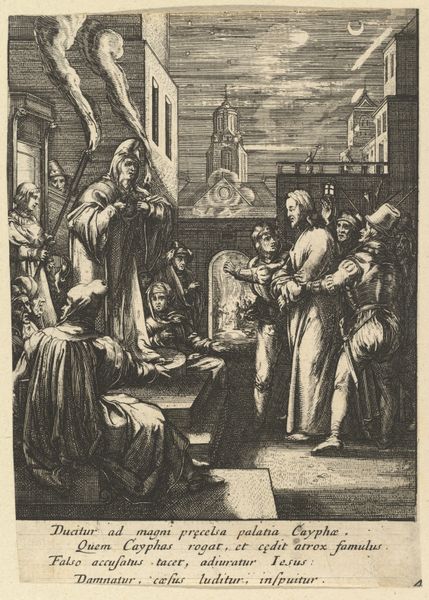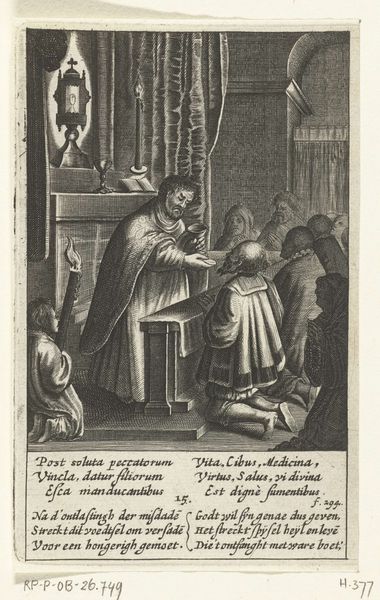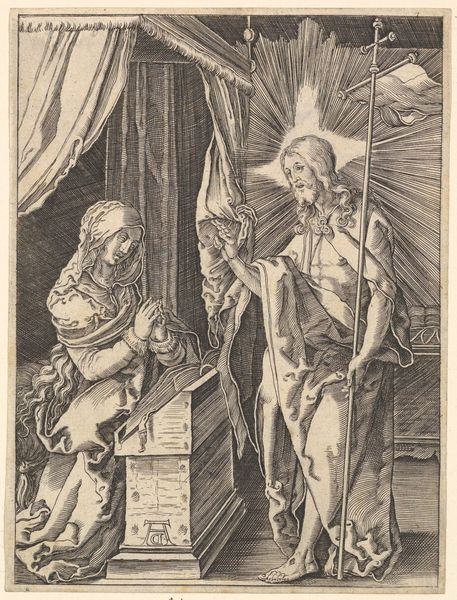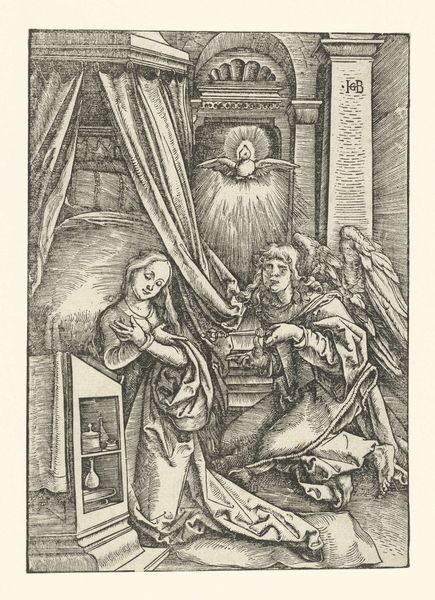
print, engraving
#
portrait
# print
#
pen illustration
#
caricature
#
figuration
#
pen-ink sketch
#
line
#
portrait drawing
#
history-painting
#
northern-renaissance
#
engraving
Dimensions: height 299 mm, width 261 mm
Copyright: Rijks Museum: Open Domain
Curator: Before us, we have Lucas van Leyden's "Annunciation," an engraving created between 1513 and 1517, now residing at the Rijksmuseum. It's a compelling depiction of a pivotal biblical scene. Editor: My first thought is how starkly composed it is; the figures are rendered with incredibly precise lines. The black and white is really evocative— almost severe, emphasizing the gravity of the moment. Curator: Indeed. Van Leyden, working within the Northern Renaissance tradition, showcases mastery over the engraving technique here. Look closely at how the density and direction of the lines build form and volume. It would have taken serious precision and time, not just artistry. Editor: And what this scene represents cannot be understated, given it’s from a society that defined the worth of women almost exclusively by their ability to reproduce! The power dynamic between angel and Mary— divine will imposed onto a mortal woman. Also, there is that banner that has a text, could you spell that out for me? Curator: Certainly, what is inscribed on the banner are the words "Ave gracia plena." Think of this process as a negotiation between the artisan, tools, and material. Each cut of the burin, each line etched, requires planning and deliberate action, creating this incredible level of detail for consumption by contemporary audiences. Editor: Yes, precisely! Especially as this scene reinforced prescribed ideas around not just the purpose but how society dictated the role of women during that period. Curator: This engraving’s presence and distribution provided common visuals that reinforced the doctrines, but how and where such religious tools like "Annunciatie" appeared, invites an intersectional view for audiences across socioeconomic positions, religious factions, gender and age. Editor: True, there are so many intersecting readings for modern viewers now that shed more light into both art-making, social constructs, and beyond. I am still thinking of the engraving details. How intricate, meticulous this process must have been back then! Curator: It is this balance that makes van Leyden's work so enduring—an intersection where artistry meets labor, belief systems converge and materials become history. Editor: And the narrative remains so powerful today—for good or ill, depending on who's engaging with it, really. Thanks for guiding us.
Comments
No comments
Be the first to comment and join the conversation on the ultimate creative platform.
